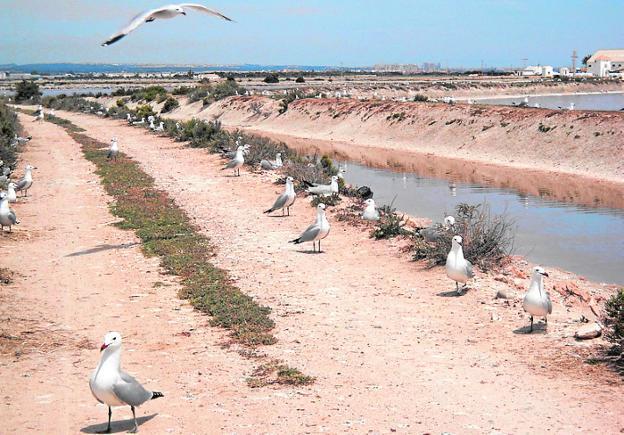Experts say that there was a total of 1,802 nesting pairs of waterfowl in San Pedro Salinas regional Park this spring, across 14 different species, which shows an increase of more than 200 pairs of birds compared to 2017.
Of these 14 species, nine are uniquely relevant species which require special protection measures. Among them is the Audouin gull, a species classified as threatened worldwide and of which this year 180 pairs nested in the Park, representing about 2% of the world’s nesting population.
In addition, the presence of six other species has been identified as being of special relevance by the European Union, such as the common avocet, the black-footed plover, the black-footed boar, the common tern, the little tern and the black-footed tern.
Among these the presence of 56 pairs of black-footed plover is highly significant, as it is a species that is disappearing worldwide, the number representing between 5% and 6% of the entire Spanish nesting population.
The 165 pairs of Pagaza piconegra, meanwhile, account for between 2% and 3% of the national total, while the 203 pairs of common terns that have bred in the area represent 6% of the Spanish population and 1 % of the entire EU.
Murcia’s General Director of Environmental Affairs, Consuelo Rosauro, explained that from this month the Consel will start actions to improve the natural park. “This is an area of enormous importance for bird nesting and conservation, in which other activities such as traditional fishing or salt exploitation coexist,” she said.
As such the authorities will carry out tasks of conservation of flora and fauna, especially waterfowl, and dunes, and the delimitation of passage areas; the construction of 1,800 meters of new salt mines and the improvement of the circulation of water in the pond of Coterillo.





